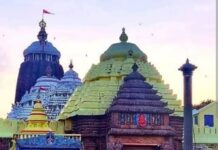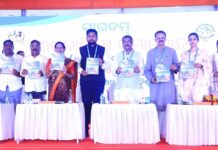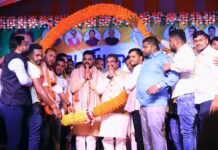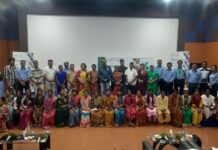In the Vedas, fire or Agni is treated as a living creature as it is hungry for food. It feeds on wood and ghee! Through smoke, Agni transports the offerings made by humans to devas, gods who live above in the sky. He is guided by the hymns chanted during the ritual. When devas are pleased with the offerings, they give the humans whatever they hunger for. Hunger thus binds humans and gods. Humans feed gods and gods feed humans. This mutual feeding is the essence of yagna, the Vedic ritual, that finds mention in the very first verse of the oldest Veda, the Rig Veda. Food or bhoga is critical to any understanding of Hindu philosophy.
Contrast the Vedic gods with the Vedic hermits, the tapasvis, who do not eat, who consume neither food nor sensory stimulations. These tapasvis do not care for outer fire or agni, but they generate on their own inner fire, tapas, through the ritual of tapasya. The gods fear them. Indra, king of devas, fears they will topple him from his celestial throne. So he sends apsaras or damsels to enchant these hermits, and make them lose control, and succumb to the hunger of the flesh.

Thus, we see the tension between satisfaction of hunger (bhoga) and outgrowing hunger (yoga), which forms the cornerstone of Hindu philosophy. The temple traditions tilt towards the former. The monastic orders, including Jainism and Buddhism, tilt towards the latter. Thus, feeding gods is a critical part of puja, while fasting of devotees is a critical part of vrata. We can see how hunger and its satisfaction through food forms the building block of most Hindu rituals.
The ancients realised that hunger is what distinguishes the animate (jiva) from the inanimate (ajiva). Plants are hungry. Animals are hungry. Humans are hungry. But human hunger is unique: we can restrain it or amplify it. We can choose not to eat and feed others. We can choose to eat while others starve. The act of yagna makes us feed others and hope that the other feeds us; thus it forces us to be generous, and have faith in the other. Generosity and trust are the pillars of human civilisation. Without it there cannot be a healthy social structure. Thus, they contribute to dharma.
Food, then, is about dharma (governance). It is also about artha (economics). It is also about kama (pleasure). But it entraps man, and so does not contribute to liberation (moksha). Eating make us part of the circle of life, for the act of consuming grants us life, while it means death of that which we consume. Plants consume the non-living, but animals and humans consume the living. Plants devour water, sunlight, air and earth; the elements do not fight back. Animals devour plants and others animals, who fight back. The fight back of animals is evident to all. Plants fight back in a more subtle manner: taking form of thorns, and keeping leaves out of reach of grazing animals. The ancient rishis (those who observe) noticed the fight for life: the killer and the killed. They realised without violence (bali) there cannot be food (bhog). The act of violence creates karma. Thus, the seed of karma is hunger. Buddha described hunger as desire, and the cause of suffering. To be truly happy, we have to outgrow desire, and hence, hunger for food. But that also means end of the body, the end of identity, nirvana!
Devdutt Pattanaik is a renowned author, mythologist, and leadership consultant, whose work focuses on deriving management insights from mythology to reveal a very Indian approach to modern business. He has authored over 30 books, many of them best-sellers like Myth = Mithya, Business Sutra, The Pregnant King, and Jaya: An illustrated retelling of the Mahabharata.
Source : The Indian Express






















